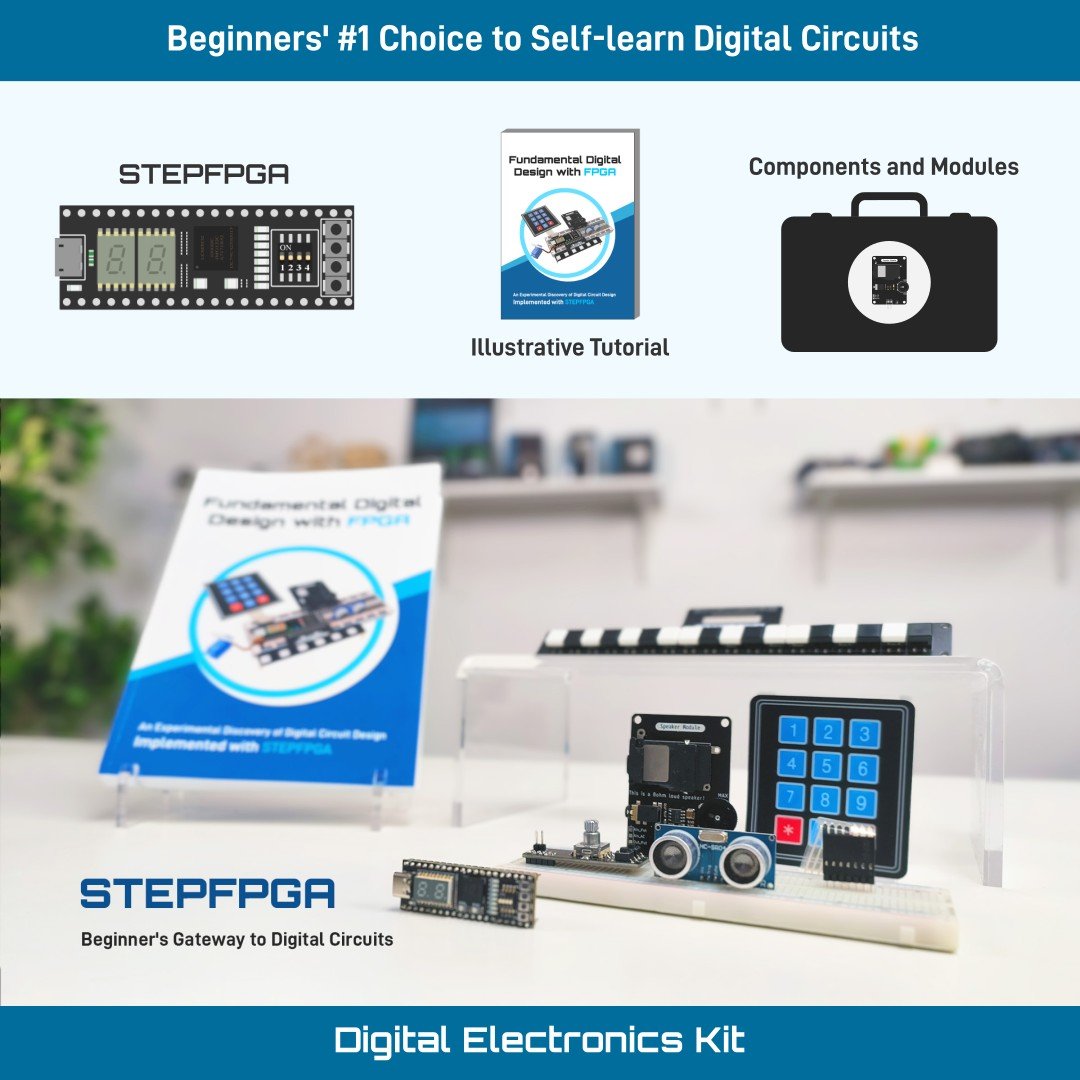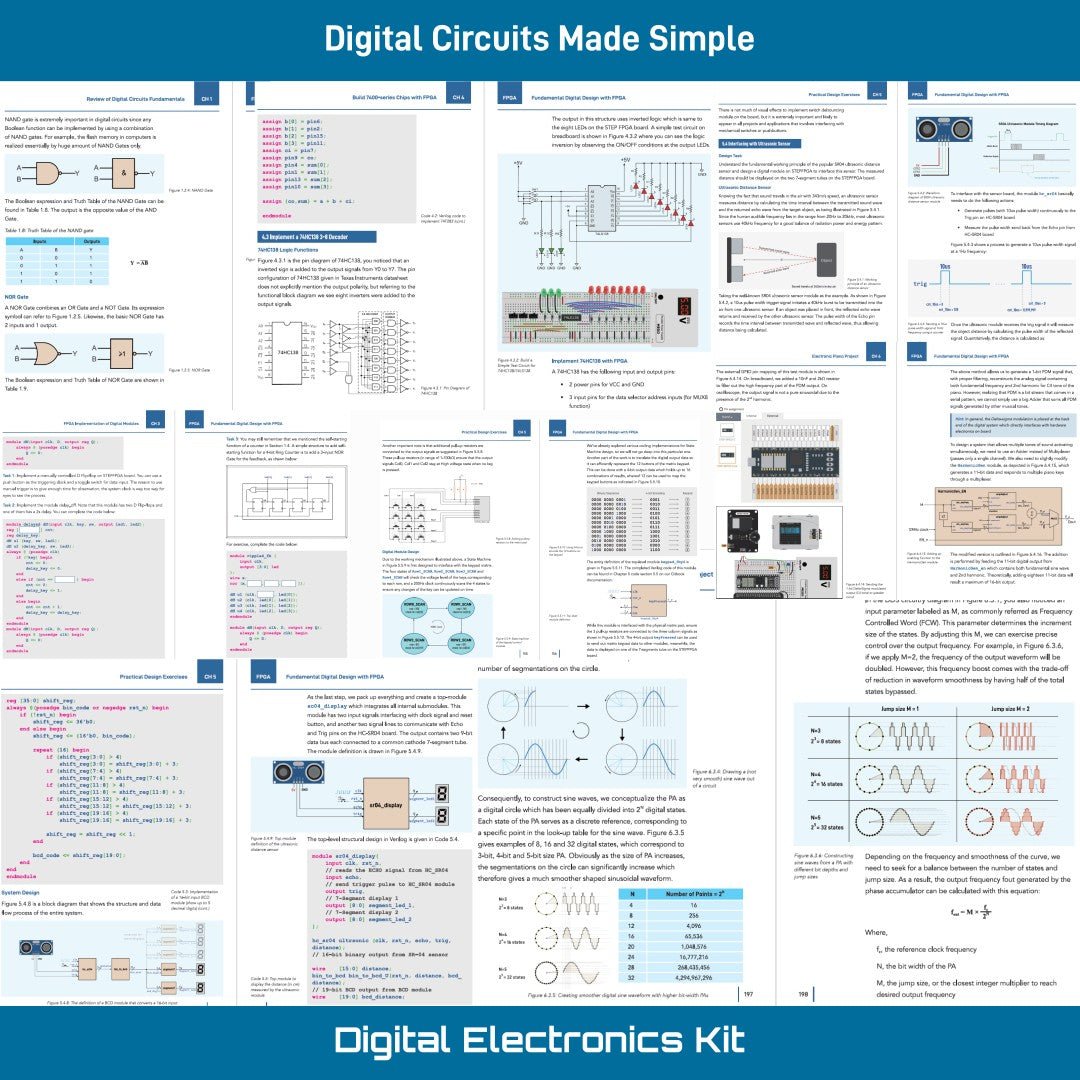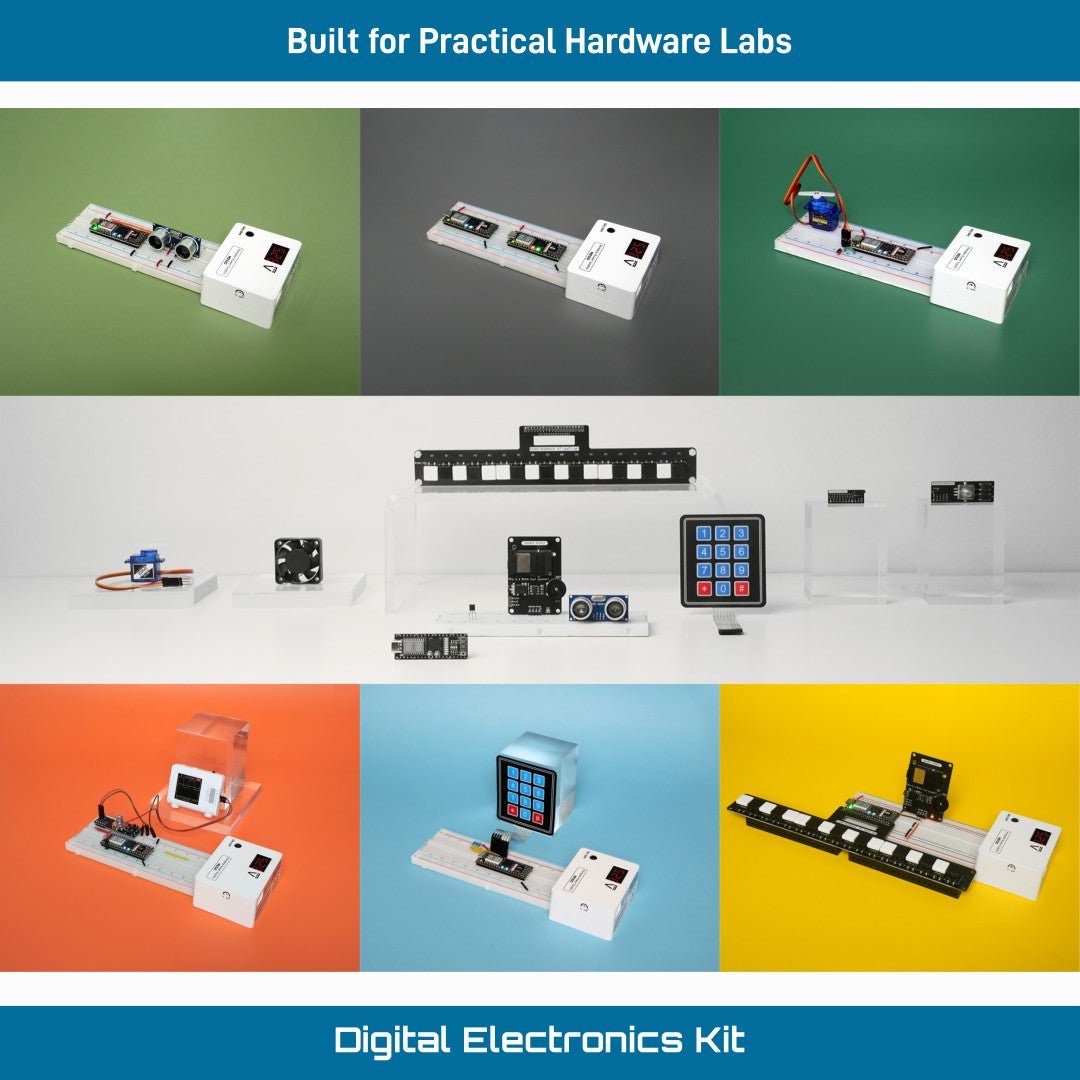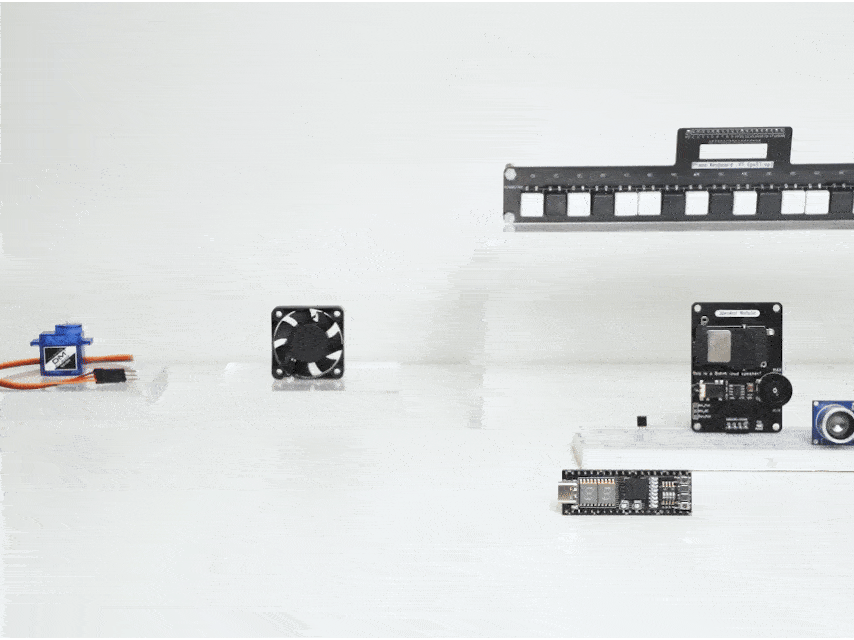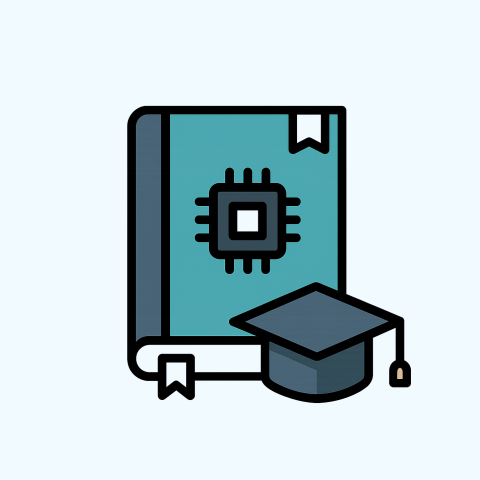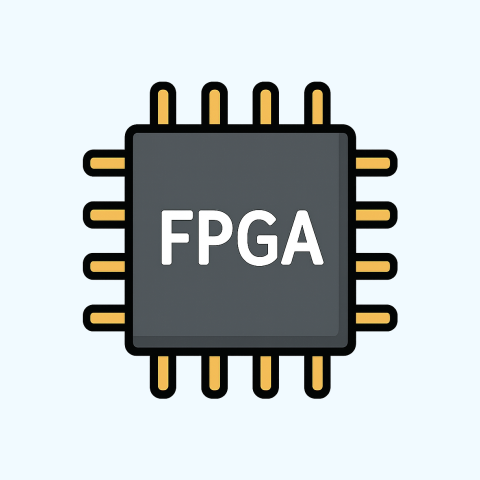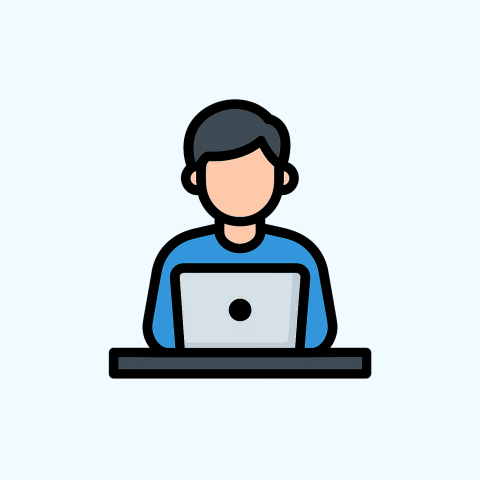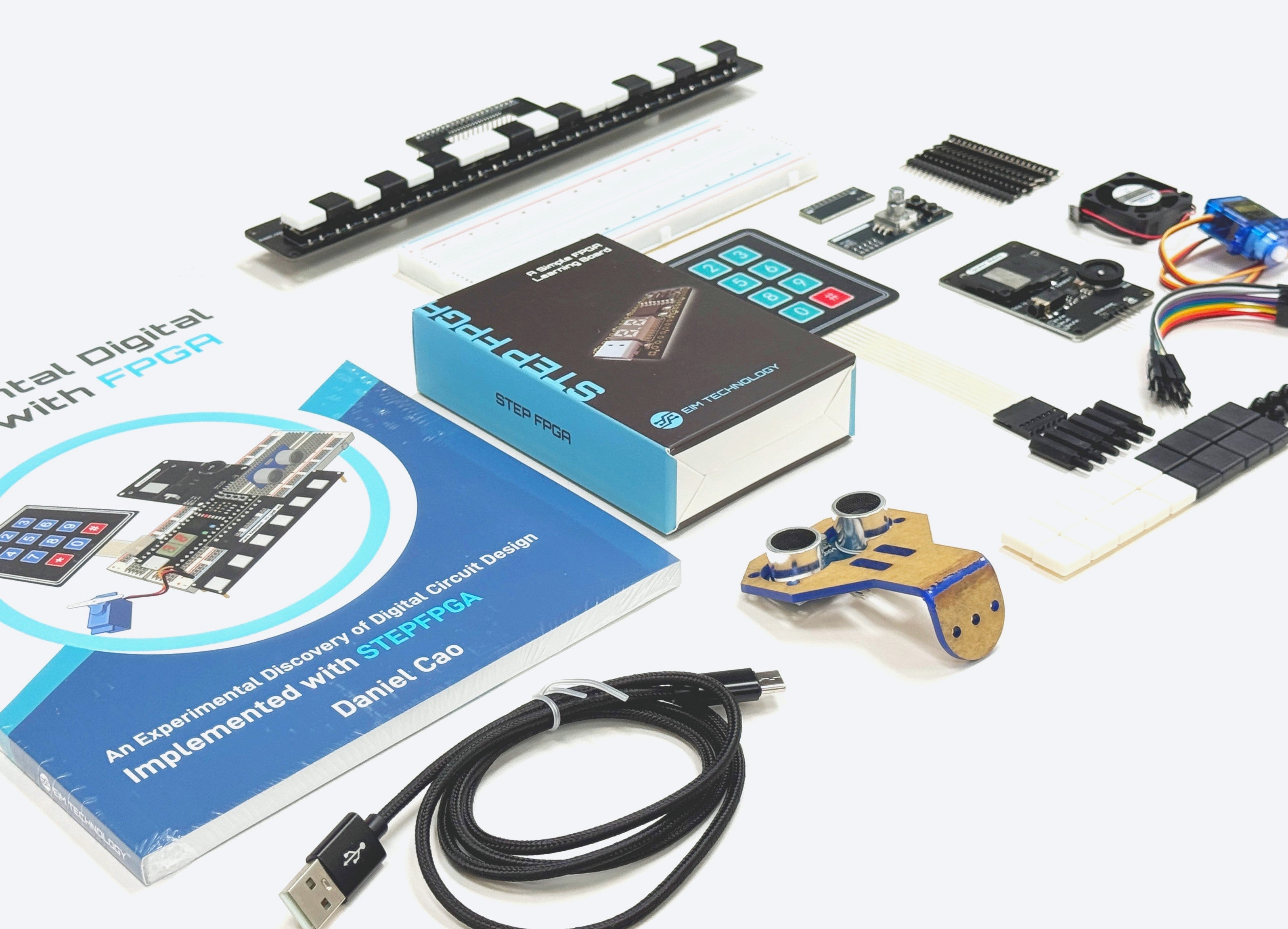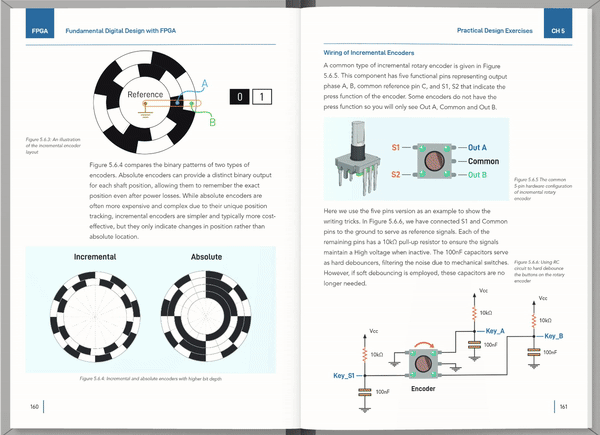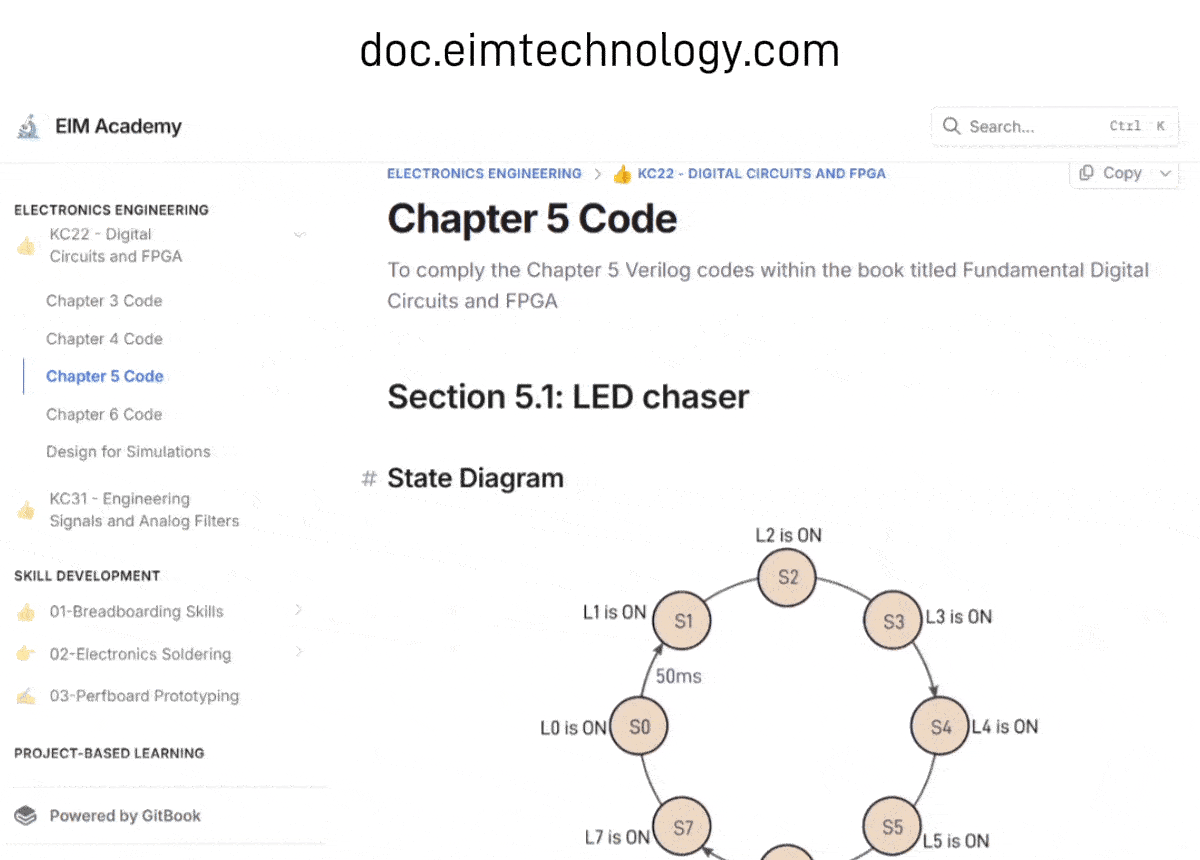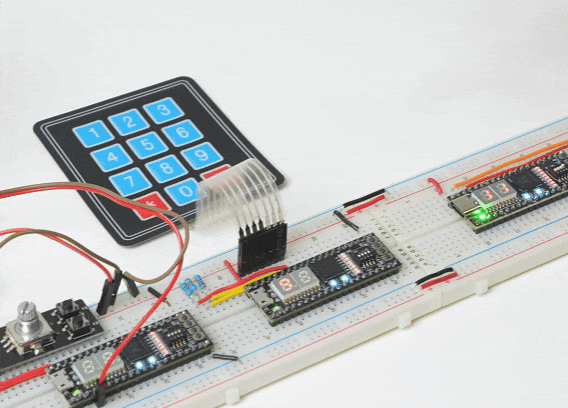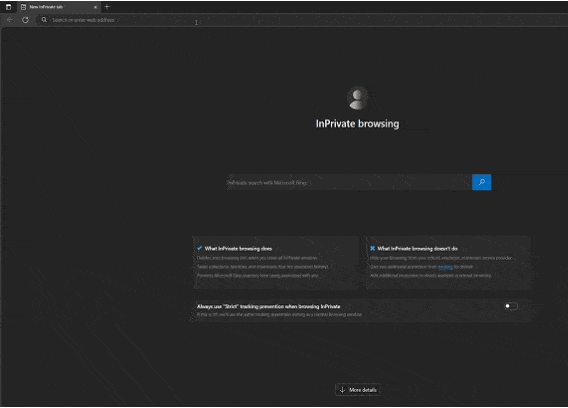This beginner-friendly FPGA learning kit is designed to help students, educators, and self-learners build a solid foundation in digital electronics and Verilog HDL programming. Using the STEPFPGA development board and a complete set of plug-and-play hardware modules, you’ll gain hands-on experience with digital logic circuits, binary operations, counters, multiplexers, state machines, and more.
The kit includes a 200-page printed tutorial that guides you step by step through theory, circuit building, and FPGA implementation, from simulation to working hardware. A browser-based WebIDE makes it easy to get started without installing complex toolchains. Whether you’re preparing for computer engineering courses or exploring how FPGAs work in real systems, this kit offers a structured, project-based learning journey that turns abstract concepts into tangible results.
